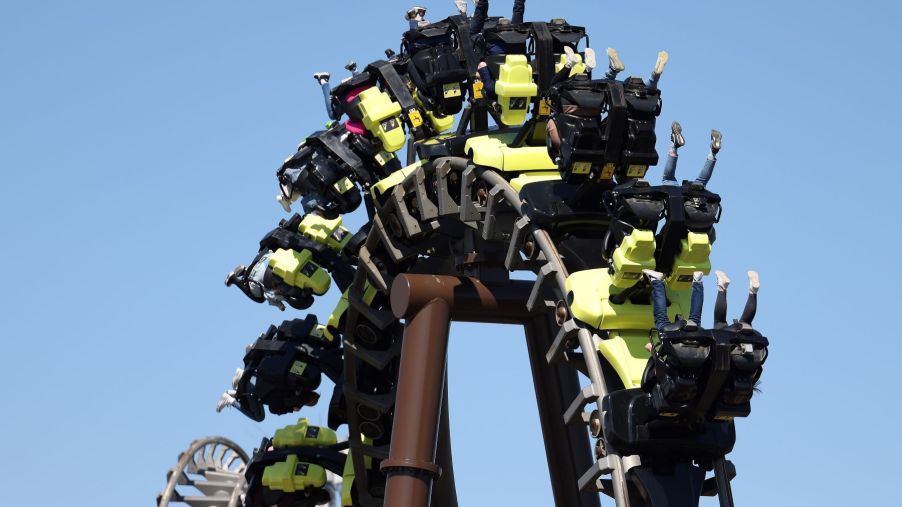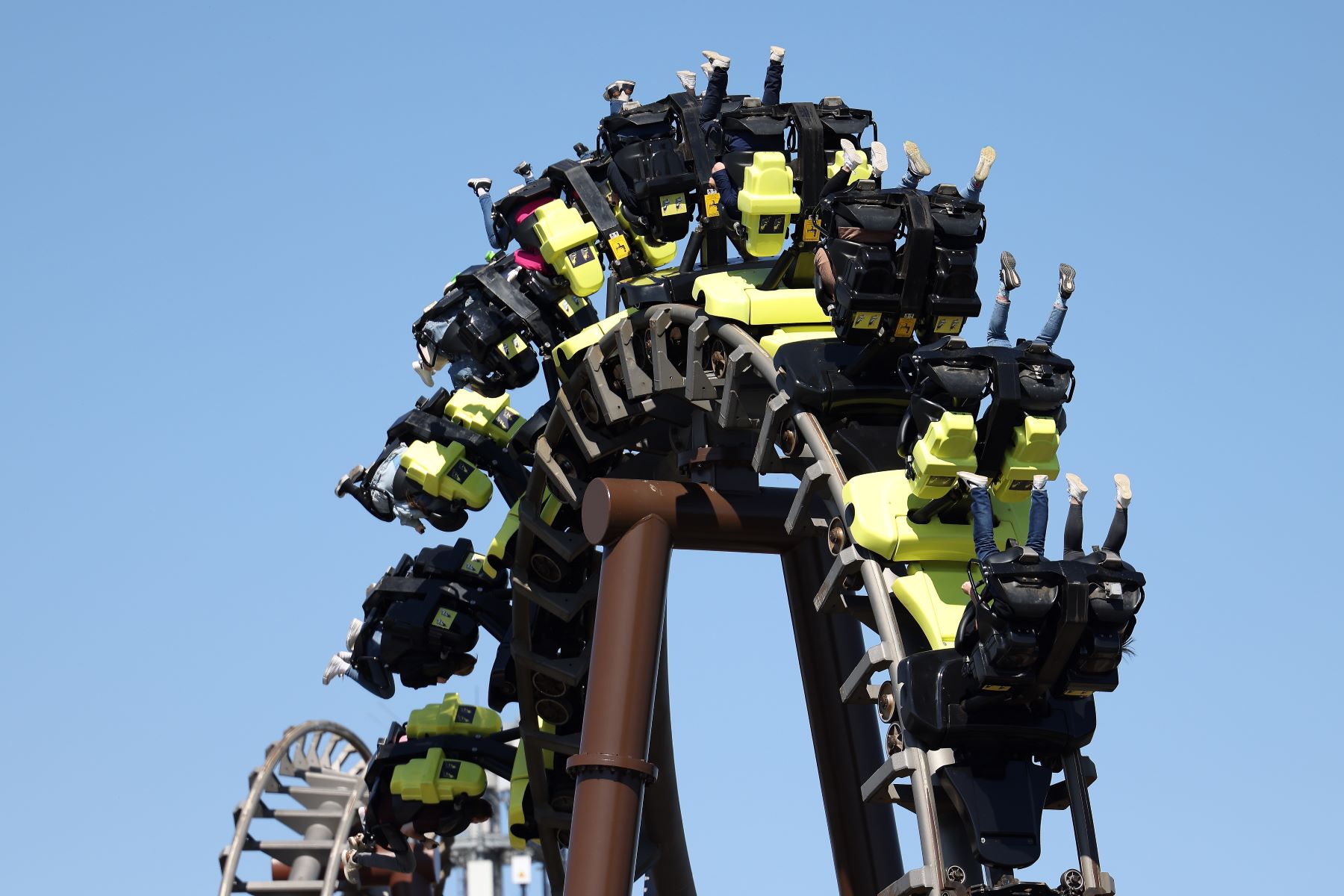
How Much Horsepower Does a Roller Coaster Have?
Cars require some kind of engine or motor, gas or electric, to get you to your fun destination. Those powertrains may get you to your local theme park for some roller coaster thrills. While the maintenance design is completely different, roller coasters also require some kind of motor to operate, and they produce horsepower. How do roller coasters work, and how much power is under those hoods?
Roller coasters run on physics

According to How Stuff Works, roller coasters are similar to passenger trains in how you ride in interconnected cars, but the difference is that most roller coasters do not need a motor or power source to operate. It is gravity and momentum that carries you most of the way.
To get you started, you need to build up that momentum by getting to the top of the hill. Most traditional coasters use a chain lift to get you to the top of the hill. One long chain or several chains under the track pulls the cars to the top of the hill. That chain is looped around a gear at the top and the bottom of the hill. The gear at the bottom is turned by a motor.
Going up the hill builds potential energy, the energy of position. This potential energy is then released as kinetic energy, the energy of motion, as you go down the hill. Once you round the corner of the first hill, gravity takes control of the car and applies a constant downward force. The track controls where the train will go as gravity forces it downward. Downhills speed the car up, and uphills slow it down. It really is a basic concept. Roller coasters use gravity and inertia to propel the car along the track. No motor is needed thanks to physics once the car is in motion.
Most modern roller coasters use launch systems
According to York Precision Machining & Hydraulics, There are three main launch systems used in more modern roller coasters:
- Electromagnets: The linear-induction system uses electromagnets to build two magnetic fields. There is one field on the track and one on the bottom of the train. These fields are attracted to each other. The motor moves the magnetic field along the track, pulling the train at high speed.
- Hydraulic: Hydraulic systems use a combination of hydraulic motors to provide the power, a winch to attach the motors to the catch care, a catch car that runs beneath the car, and a return cable to return the car to the starting point.
- Pneumatic: Pneumatic systems are similar to hydraulic systems, except they use air instead of nitrogen gas and hydraulic fluid.
These systems are very powerful. According to Idea Wiki, the hydraulic pumps can produce around 500 horsepower each. The newer pneumatic systems can launch the car from rest to 80 mph in 1.8 seconds.
Several U.S. roller coasters use launch systems
The following roller coasters in the U.S. use the more modern launch systems with great reviews:
- Kingda Ka (Six Flags Great Adventure, New Jersey): Kingda Ka is the world’s tallest and second fastest roller coaster. It uses a hydraulic launch system. It can reach 128 mph in 3.5 seconds.
- VelociCoaster (Universal Islands of Adventure, Orlando): Forbes explains that his roller coaster has two launches. One launches you to 70 mph in 2.4 seconds and takes you 155 feet up in the air, followed by an 80-degree drop.
- Hagrid’s Magical Creatures Motorbike Adventure (Universal Islands of Adventure, Orlando): Trip Savvy explains that this “story coaster” reaches a 50 mph maximum with seven launches, which is the most launches on any roller coaster in the world.
- Rock ‘n’ Roller Coaster (Disney’s Hollywood Studios, Orlando): Rock ‘n’ Roller Coaster is the first coaster in Walt Disney World to have multiple inversions. It also features 120-125 speakers and 24 sub-woofers, according to Inside the Magic.
- Guardians of the Galaxy: Cosmic Rewind (EPCOT, Orlando): Guardians of the Galaxy is the first in Walt Disney World to feature a reverse launch. It is slated to debut in 2022 and will contain one of the world’s longest enclosed roller coasters, according to the website Coaster.


